Music of the Chicano Movement
Lesson Hub 12:
Lasting Legacies of the Chicano Movement
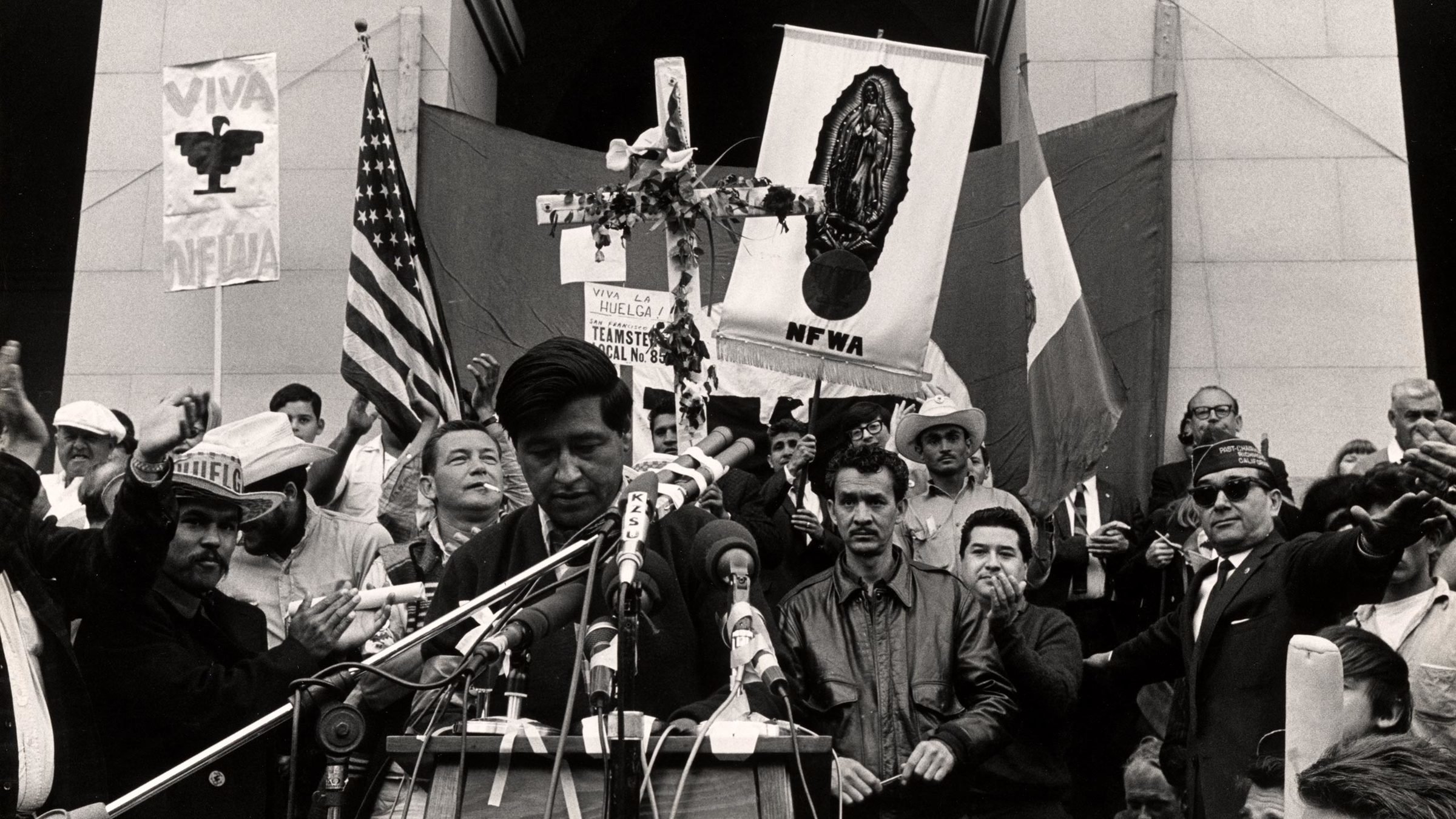

What are some of the most important legacies of the Chicano movement?
Cesar Chavez, by Emmanuel Martinez. Smithsonian American Art Museum.

The overarching essential question for Lesson 12 is:

Lasting Legacies of the Chicano Movement

30+ MIN
45+ MIN
20+ MIN
MUSIC LISTENING
HISTORY & CULTURE
CREATIVE CONNECTIONS
Exploring Chican@ Art
Path 1

30+ minutes

Chicano Art Expo Poster, by Rodolfo O. Cuellar. Smithsonian American Art Museum.

Exploring Chican@ Art
One of the most lasting legacies of the Chicano movement is the sheer volume of artistic production that occurred during this time.
Chicanarte: Statewide Exposicion of Chicano Art, unknown artist. Archives of American Art.


The lessons throughout this pathway teach about the many ways in which Chicana/o musical artists have shared (and continue to share) their cultural identities, values, and sense of pride through the creation and performance of music.

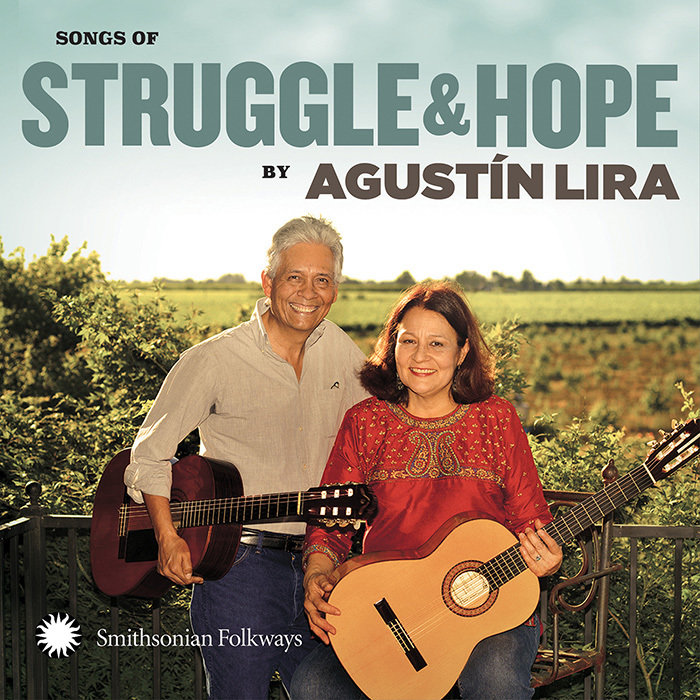
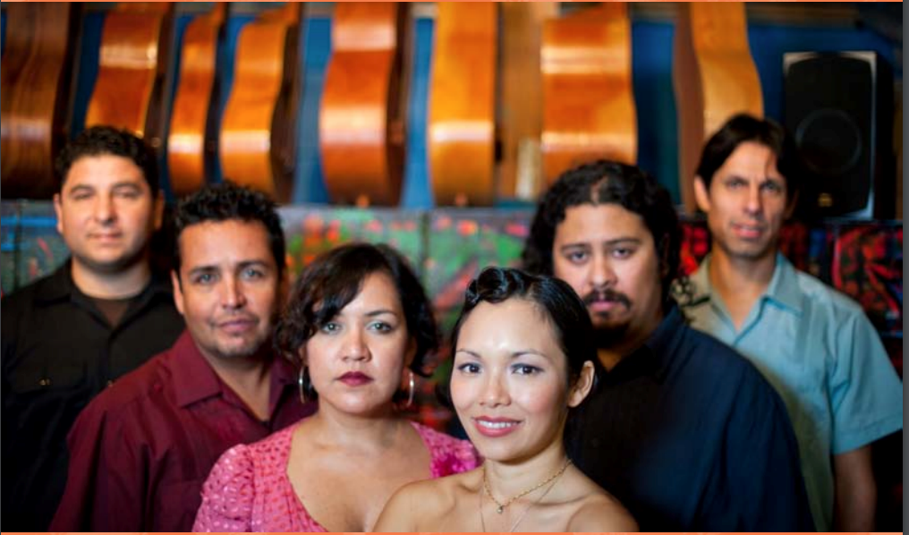

From Left to Right: Agustín Lira and Alma, by Tom Pich; Quetzal, by Brian "B+" Cross; Los Texmaniacs, by Daniel Sheehy. Smithsonian Folkways Recordings. Rumel Fuentes, by Chris Strachwitz, Arhoolie Records.

Chicana/o visual artists have also been incredibly prolific . . . both during the time of the Chicano movement, and beyond.
Exploring Chican@ Visual Art
Chicano Art Expo Poster, by Rodolfo O. Cuellar. Smithsonian American Art Museum.


Del muralismo revolucionario al arte Chicano, by Museo National de Culturas Populares. Archives of American Art.

Exploring Chicana/o Visual Art
During the Chicano movement, much of the visual artwork that was produced was influenced by an aesthetic notion known as rasquachismo.
Chicano Aesthetics: Rasquachismo, unknown artist. Archives of American Art.

What is rasquachismo?

Rasquachismo is based on the word rasquache, which loosely means
“to make do without.”
Rasquachismo is . . .

- Creating art with limited resources
- Making the most from the least
- Using discarded and recycled materials, even fragments, to create a new aesthetic that is both defiant and inventive

Plywood Panel from a Mural at Resurrection City, unknown artist. National Museum of African American History and Culture.
Rasquachismo is . . .

- "first an attitude and a sensibility, and second, a set of formal art qualities” (Ybarra-Frausto, 1989)
- a survivalist attitude . . . the lifestyle of the underdog
- as much about the back story as the artwork or object itself

Altar for La Virgen de Guadalupe, sculpture by Hector Sanchez and Roger Garcia. Smithsonian Insider.

In addition to its aesthetic value, rasquachismo-inspired artwork was (and is) intended to:
- Express and affirm cultural identity
- Express cultural pride
- Bring awareness to issues related to discrimination, oppression, exploitation, and marginalization
- Encourage/inspire people to resist and fight injustice and oppression
Purposes of Rasquachismo-Inspired Art:
Boycott Campbell's Soup, unknown artist. National Museum of American History.
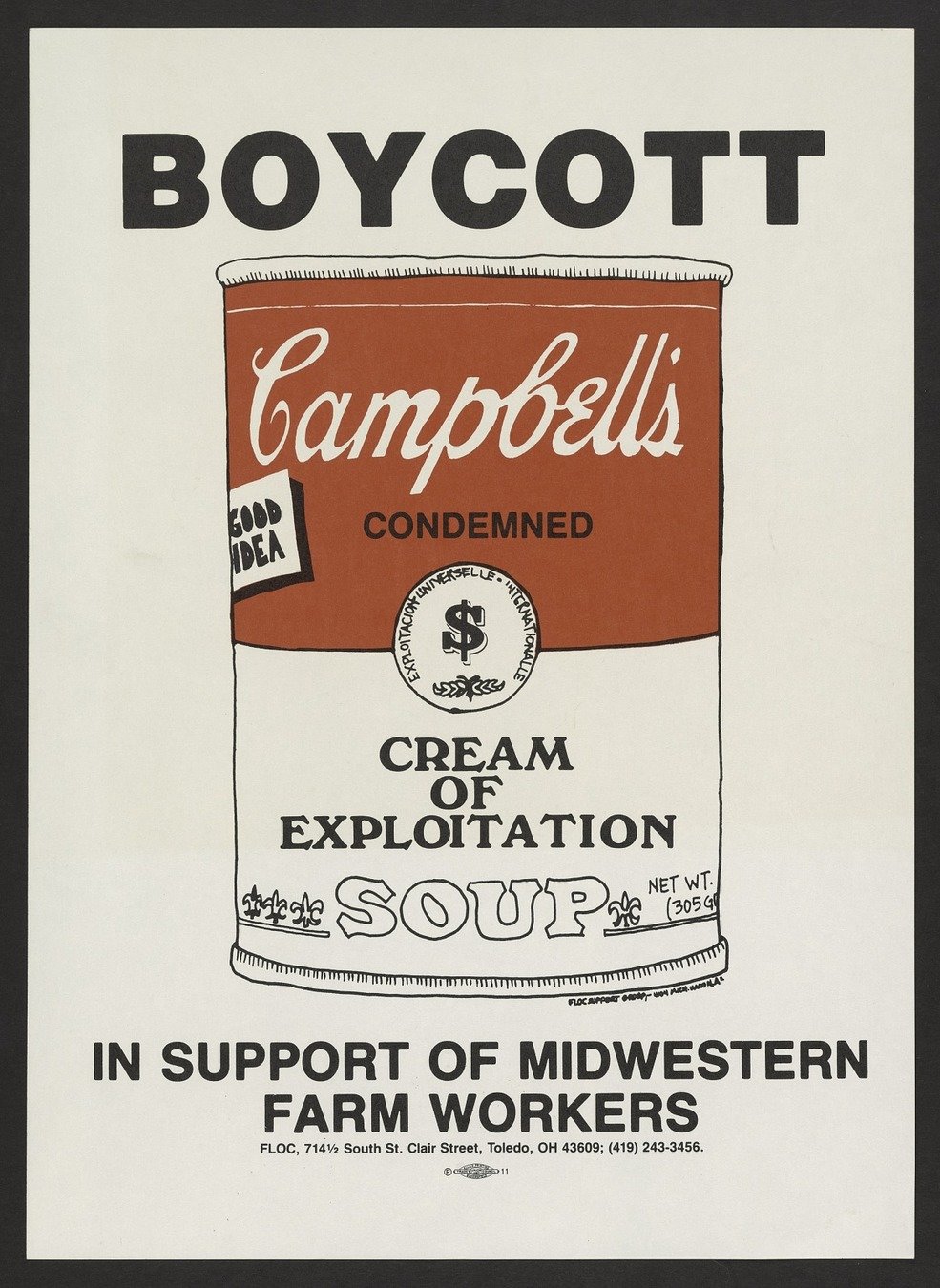
Common Themes in Rasquachismo-Inspired Art: Indigenous History, Symbolism, and Myth

Images from the Smithsonian American Art Museum



Boycott Grapes, Support the United Farm Workers Union, by Xavier Viramontes.
Anisinabe Waki-Aztlan, by Carlos A. Cortéz.
Estrella of the Dawn, by Los Dos de Dos, Yreina D. Cervántez, and Lèo Limón.



From Left to Right: Our Lady of Guadalupe, handkerchief by Walter Baca; Our Lady of Guadalupe T-Shirt, unknown artist. National Museum of American History.
Common Themes in Rasquachismo-Inspired Art:
Religious Symbols (Our Lady of Guadalupe, Jesus)

Chicano Power Mural Protesting The Vietnam War & Injustice, unknown artists. Photograph by Randomshots. Dreamstime.
Common Themes in Rasquachismo-Inspired Art:
Chicano Movement Leaders/Symbols (Chávez, Huerta, UFW Flag & Eagle)
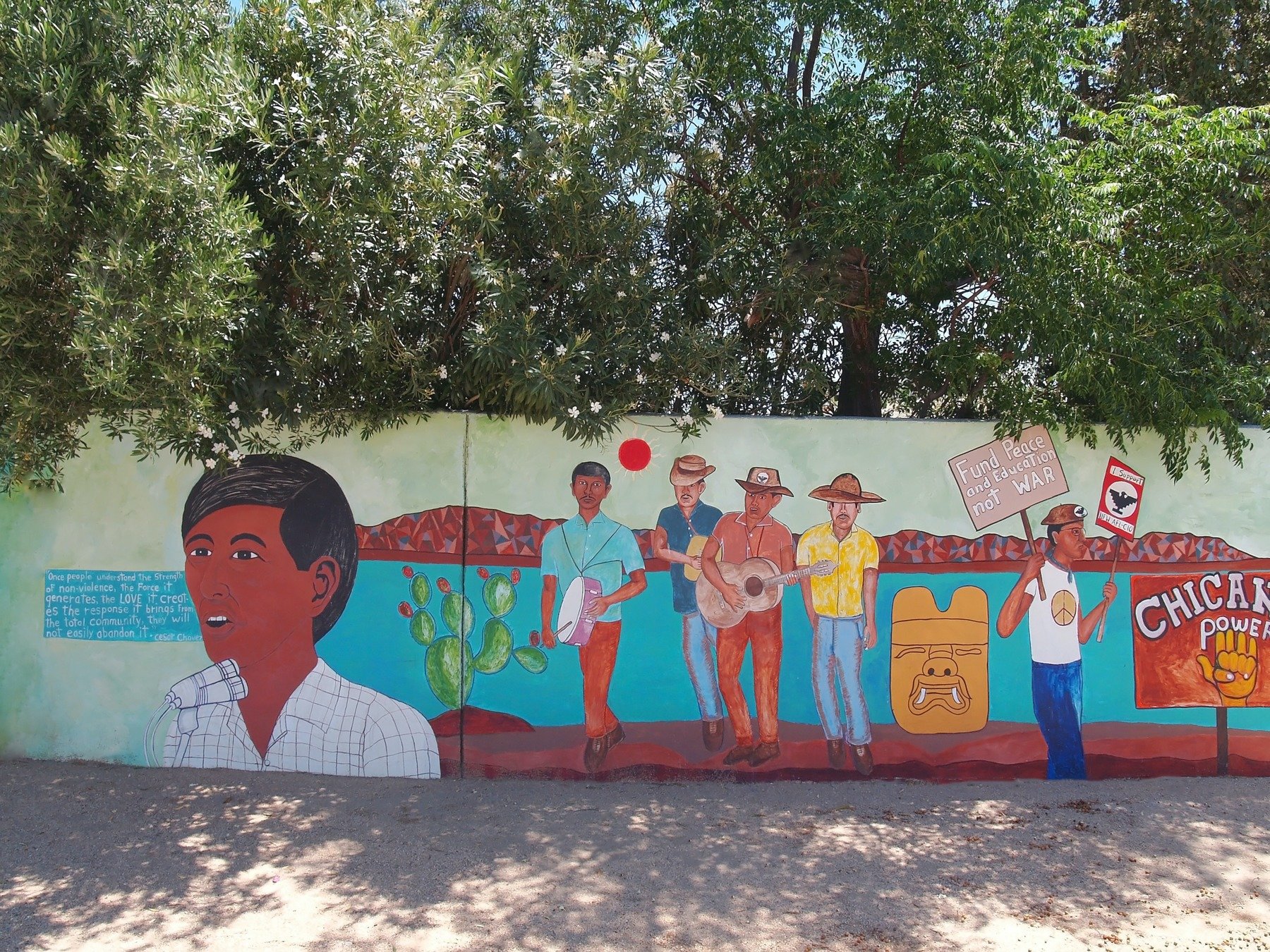

There are three distinct types of Rasquachismo art . . .
1. Not fine art at all!
- Often a collection of objects placed in a purposeful way (such as an altar displayed in someone’s backyard)
- This type of art is personal, not usually intended for the public eye

Altar for La Virgen de Guadalupe, photograph by Nerin Kadribegovic. Smithsonian Insider.

2. Commercial Art:
Placing symbols or important images or symbols on items intended to be sold (like t-shirts, bags, buttons, etc.)


Pinback Button for the National Farm Workers Association, unknown artist. National Museum of African American History and Culture.
Our Lady of Guadalupe T-Shirt, unknown artist. National Museum of American History.

3. Fine Art:
The same attitude and reusing of materials, but the product is specifically conceptualized as fine art.
I Dreamed I Could Fly, by Carlos Almarez. Smithsonian American Art Museum.

Popular Art Mediums

These mediums were inexpensive to create and highly visible.
Poster for the 1984 Summer Olympic Games held in Los Angeles, CA, by Carlos Almarez. National Museum of American History.

Two of the most popular mediums used by Chicano/a visual artists during the time of the Chicano movement were the silkscreen poster, and the mural.
In general, reaching a wider audience was more important than having artwork displayed in galleries or museums.
Posters

- During the Chicano movement, silkscreen posters were inexpensive and easy to make and distribute widely.
- They often contained political messages, ideas for social change, and specific calls to action.
- In some cases, artists worked directly with movement leaders (such as César Chávez) as they created their posters.

Si Se Puede Boycott Lettuce and Grapes, unknown artist. National Museum of American History.
More Examples of Silkscreen Posters

Left: Boycott Grapes, Support the United Farm Workers Union, by Xavier Viramontes. Right: Sun Mad, by Ester Hernandez.
Images from the Smithsonian American Art Museum.












Murals
Abierto al Publico Mural and Mural in Los Angeles, unknown artists, photographs by Salina Canizales, Flickr (CC BY-NC-SA 2.0 & CC BY-ND 2.0).
A mural is perhaps the ultimate form of rasquachismo art. When artists make a mural, they transform something that already exists and is necessary (such as a
cement wall or pillar) into something that is beautiful and meaningful.
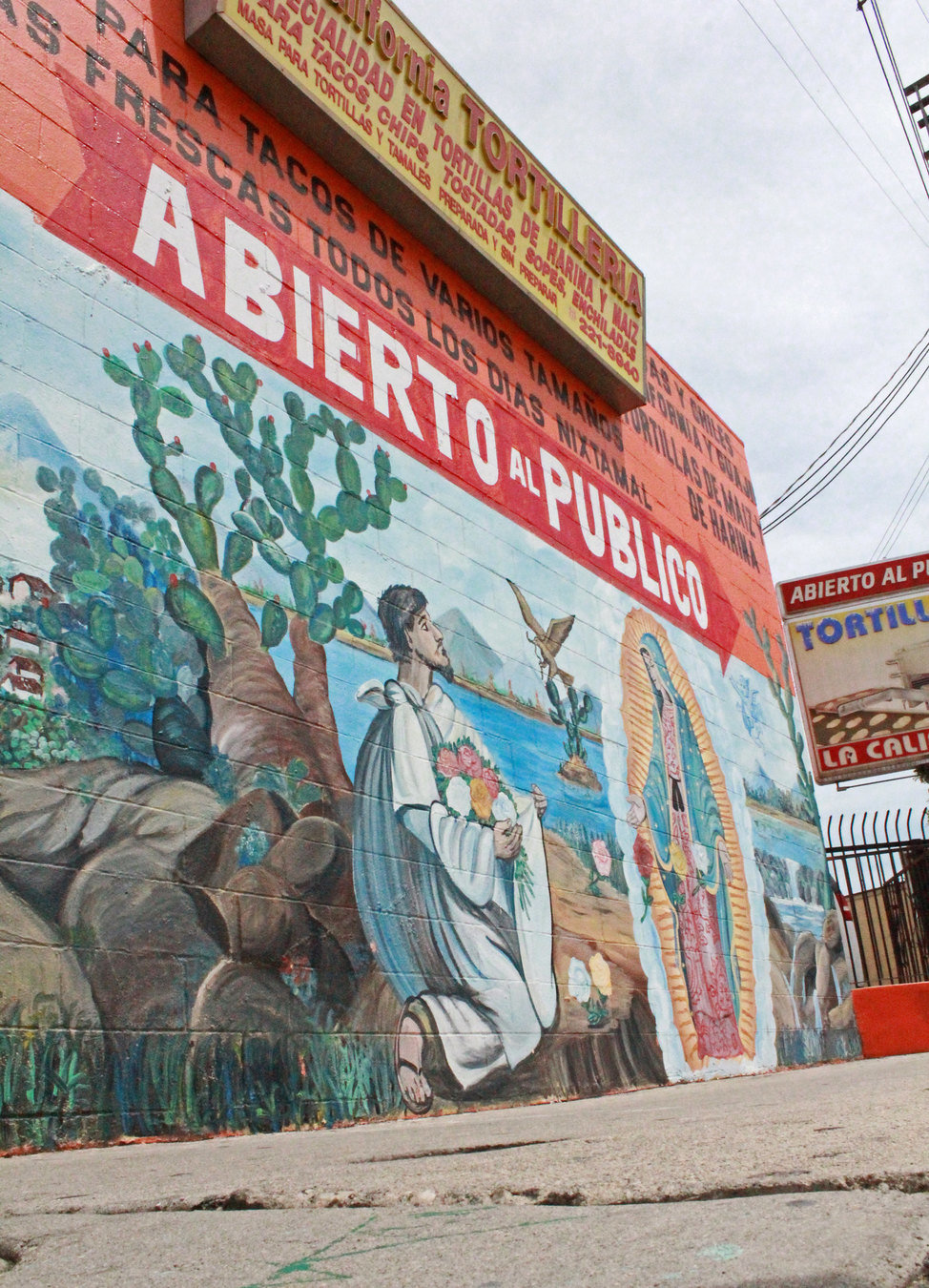
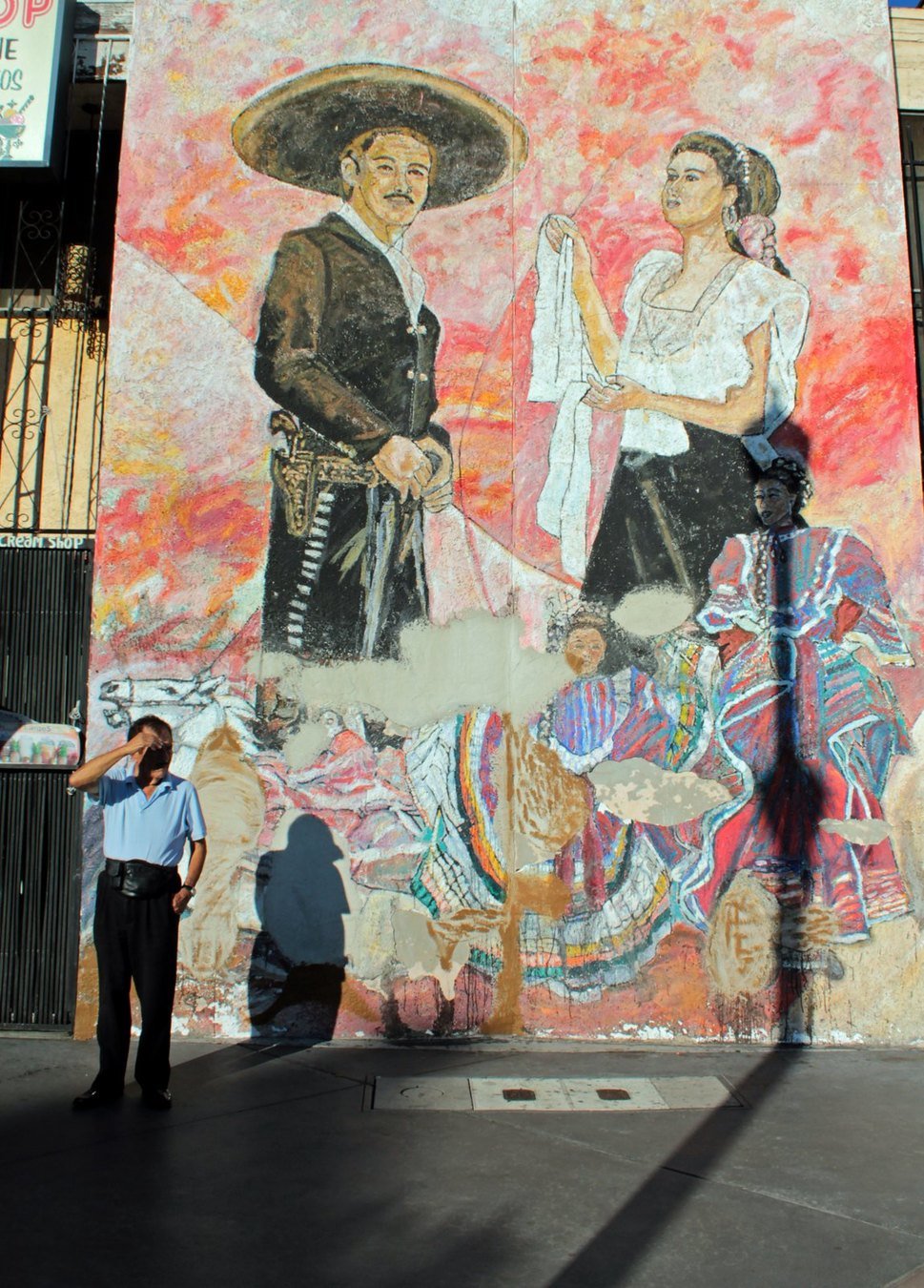

Extension Activity: Elements of Art
6 Sided Dice, by Diacritica. Wikimedia Commons (CC-BY-SA-3.0).
- Write the names of the six elements of art on a die. Or alternately, associate each with a number 1-6.
- Pass a die around the class as the class reviews the images in this lesson. Students take turns rolling the die and then make a statement about the element that comes up as related to the artwork they see.
1 = line
2 = shape
3 = form
4 = space
5 = color / value / contrast
6 = texture


Everyone is an Artist!
Within the next activity, you will have an opportunity to create your own rasquachismo-inspired artwork.
Let's Make Art!

Some considerations . . .
-
Choose your theme
- Consider choosing a theme that expresses your cultural identity or a cause that is important to you
- Choose your conceptualization of rasquachismo (not fine art/everyday objects, commercial art, fine art)
- As you work, remember the core meaning of the word rasquachismo: creating art with limited resources and making the most from the least.
-
Choose your medium
- Some ideas: Poster, mural, collage, self-portrait, collection of found objects, sculpture

Learning Checkpoint
- What is rasquachismo art?
- What were the most popular mediums used by Chicano/a visual artists during the time of the Chicano movement?
End of Path 1! Where will you go next?




The Issue of Immigration
Path 2

45+ minutes

Braceros, by Domingo Ulloa. Smithsonian American Art Museum.

Attentive Listening
Click to the next slide to watch a video featuring the song “I Am a Mexican” (written by country singer-songwriter Rick Treviño).

Rick Trevino Official Promotional Photo 2016, courtesy of Campo Negro Records. Wikimedia Commons (CC-BY-SA-4.0).
Think about this guiding question:
What is the main message of this song?
"I Am a Mexican"


Migrant Workers and Immigration
This song brings to surface another important legacy of the Chicano movement: the immigrant-worker issue.


"I Am a Mexican" Meaning
Rick Treviño released the song “I Am a Mexican” (2018) in response to anti-Mexican/anti-immigrant rhetoric.

He wanted to write a song that highlighted both the strong work ethic of Mexican people and their admiration for the opportunities in the United States.

According to Rick Treviño . . .
“The origin [of the song] is from two places. Mainly it’s from being third generation Mexican American . . . Second, since there’s such a heated conversation about undocumented immigrants, it just seems that the undocumented immigrant does not have a voice in this. The political rhetoric is pretty heated, and it just felt like this is what I wanted to say about undocumented immigration, and the song line that says, ‘A made-in-America man’ is the hook—‘I am a Mexican’ . . . so it’s just giving a voice to the voiceless, from my perspective” (Cruzando Borders liner notes).


The Issue of Immigration
“She says my back is wet, I say it’s honest sweat”
What is your interpretation of these two lines from the song "I Am a Mexican"?
“I run from la migra for mi familia”
Wetback is:

A derogatory term that has been used to describe a Mexican living in the United States without official documentation.
"Wet" is a reference to swimming or wading across the Rio Grande River.

Undocumented, by Malaquías Montoya. Smithsonian American Art Museum.
La Migra is:

A slang term for US Immigration and Customs Enforcement (ICE) or any such other immigration law enforcement agencies.


ICE ERO Officer Badge, U.S. Immigration and Customs Enforcement. Wikimedia Commons, PD (U.S. Code § 105).
Patch of the United States Border Patrol, U.S. United States Department of Homeland Security. Wikimedia Commons, PD (U.S. Code § 105).
Conjunto Instrumentation

Los Texmanics, by Daniel Sheehy. Smithsonian Folkways Recordings.
Rick Treviño collaborated with Los Texmaniacs, a popular modern conjunto ensemble, to create this rendition of his song.
- Conjunto ensembles are distinguished by their instrumentation, especially the use of the bajo sexto (large 12-string guitar) and accordion.


Attentive Listening
Listen to another short excerpt from "I Am a Mexican."
What do you notice about the underlying rhythmic structure?
Engaged Listening

Listen again:
This time, try to tap along with the dominant rhythmic pattern.

Bolero
This song is an example of a bolero.
The underlying rhythmic pattern of the bolero is easiest to discern when you think of it as two interlocking parts; on this recording, both rhythms are played on the bajo sexto.

Listen again:
Do you hear each pattern?
Conjunto Instrumentation

Los Texmanics, by Daniel Sheehy. Smithsonian Folkways Recordings.
Rick Treviño collaborated with Los Texmaniacs, a popular modern conjunto ensemble, to create this rendition of his song.
- Conjunto ensembles are distinguished by their instrumentation, especially the use of the bajo sexto (large 12-string guitar) and accordion.


Engaged Listening: Bolero
Practice tapping or clapping rhythms 1 or 2 with the recording.
Then, try both parts together (step rhythm 1 while tapping rhythm 2).


Immigration Issues and the Chicana/o Community
The relationship between immigration issues and the Chicano/a community has a long and complicated history that started long before the Chicano movement began.
Mexican Revolution Aftermath

This wave of immigration changed the demographics of the American Southwest and triggered anti-immigration/anti-Mexican backlash.

Adiós espalda mojada (Goodbye Wetback), by B. Barrios, printed by Lynton R. Kistler. National Museum of American History.
During and after the time of the Mexican Revolution (1910–1920), many people were forced to flee their homeland (Mexico) in order to escape the violence.
This led to a large influx of Mexican citizens across the border and into the southwestern part of the United States.

Mexican Repatriation
In many circles, Mexicans were blamed for the economic downturn that occurred during the Great Depression.
During the early 1930s, large numbers of Mexican nationals and Mexican Americans (people who were birthright citizens of the United States) were deported/repatriated.
Mexican Repatriation, 1931, New York Daily News Archive. Wikimedia Commons, PD US not renewed.


The Mexican American Generation
During the 1940s, 1950s, and early 1960s (sometimes referred to as the Mexican American Generation), many Mexican Americans (especially those in the middle class) were unequivocally opposed to Mexican immigration.
-
By this time, a “remoteness had grown between Mexico and Mexican Americans” (Rosales, 1996, p. 74).
-
“Middle-class Mexican-Americans now viewed themselves as primarily American, an idea predicated on being a conquered people, not an immigrant population” (Ibid., p. 42).

The Bracero Program
In 1942, the United States government established the Bracero Program in response to labor shortages during WWII, further complicating the issue of immigration within the Chicana/o community.
Click to the next slide to watch a short video about the Bracero Program.

Braceros Waiting Behind Fence, by Leonard Nadel. National Museum of American History.

Immigration Issues and the Chicano Movement
Even as the Chicano movement gained traction in the early 1960s, many activists and leaders did not view Mexican nationals (e.g., undocumented workers and Bracero Program participants) as part of their world.
In particular, the National Farm Workers Association (under César Chávez and Dolores Huerta’s leadership) opposed the Bracero Program and advocated for more restrictive immigration policies.

Join the Boycott - Don't Buy Gallo Wines, by the National Student Committee for Farmworkers. National Museum of American History.

Immigration Issues and the Chicano Movement
In particular, they viewed the Bracero Program as problematic because it “had become a vehicle for growers to hire cheap, easily exploitable labor” (Montoya, 2016, p. 43).
NFWA leaders felt that the hiring of undocumented workers undermined their unionization efforts.
In 1964, the Bracero Program ended (due at least in some part to the NFWA’s lobbying efforts).

Shifting Attitudes
Some activists began to argue that Mexicans who immigrated after the Southwest was acquired by the U.S. “were merely reclaiming Aztlán, the mythical homeland of the Aztecs, said to have been situated geographically in the area of the five southwestern stages obtained by conquest from Mexico” (Rosales, 1996, p. 23).

Aztlán in the United States. Wikimedia Commons (CC-BY-SA-3.0). This map shows the United States territories that are often associated with “Aztlán."
Within other facets of the Chicano movement however, sentiments regarding immigration and citizenship were shifting in a different direction.

Shifting Attitudes
This plan embraced the concept of Aztlán, and therefore included Mexican immigrants and migrant workers in their calls for justice and self-determination.
Rodolfo "Corky" Gonzales, unknown photographer. Denver Public Library Special Collections.

The 1969 Chicano Youth and Liberation Conference (organized by Corky Gonzales’s Denver-based Crusade for Justice organization) was a tipping point for the Chicano community on the issue of immigration.
Conference attendees developed a plan called El Plan Espiritual de Aztlán, which called for “unity among Mexican-Americans regardless of geography or social class” (Montoya, 2016, p. 96).
Attentive Listening

Click to the next slide to watch a video featuring a song that addresses some of the citizenship and immigration issues that started to come to the surface during the Chicano movement.
As you listen, think about this guiding question:
What is the main message of this song?



"Deportee"
Legendary American Folk singer, Woodie Guthrie, wrote the lyrics to this song in 1948 after reading a newspaper about a plane crash that occurred near Los Gatos, NM. The crash killed all 32 people onboard.

Woodie Guthrie, by Sid Grossman. National Portrait Gallery.

"Deportee"
Guthrie was angry because the news reports did not provide the names of the non-American victims, instead, they referred to them, merely, as 28 Mexican “deportees.”
Braceros Boarding Buses at the Monterrey Processing Center, Mexico, by Leonard Nadel. National Museum of American History.

Some of the people who died in this crash were part of the Bracero Program.
This short SFR video provides Lyle Lovett’s perspective on this song and why it still has relevance today:


More about "Deportee"
-
Woody Guthrie’s poem was not set to music until 1958, and the first recorded version of the song Deportee (sometimes called the “Plane Wreck at Los Gatos”) was not released until 1961.
Joan Baez, by Ivan Massar. National Portrait Gallery.
- Since the time of the Chicano movement, the song has been covered by many other influential musicians, such as Dolly Parton, Bruce Springsteen, Johnny Cash, Willie Nelson, Waylon Jennings, and Sweet Honey in the Rock.
- During the time of the Chicano movement, this song was recorded by a number of artists––most notably Pete Seeger and Joan Baez (pictured here).

"Deportee": Extension Activities

- Listen to and compare different versions of this song.
- Complete a more in-depth listening analysis for Los Texmaniacs' version of "Deportee."
- Add "Deportee" to your performance repertoire.
"Deportee": Extension Activities

In 2013, an author named Tim Hernandez successfully traced the names of all 28 Mexican nationals who died in the plane crash.

The Issue of Immigration
Although immigration reform remains a very complicated issue in the United States (perhaps more complicated and divisive than ever), the main message of the two songs we listened to during this lesson sums up the perspective of many contemporary Chicana/os on this issue.
Regardless of immigration status, ALL people deserve to be treated with dignity and respect.
Giving a voice to the voiceless
Giving a name to the nameless



Learning Checkpoint
- Why does the relationship between immigration issues and the Chicano/a community have a long and complicated history?
- How do the songs "I am a Mexican" and "Deportee" relate to the issue of immigration?
End of Path 2! Where will you go next?




The Chicano Movement: Coming Full Circle
Path 3

20 + minutes
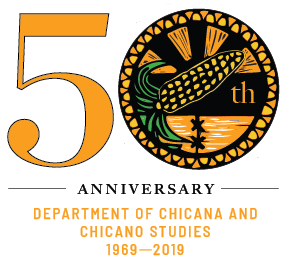
50th Anniversary Logo, designed by Bob Rob Medina and adapted by Andrea Carrillo. Department of Chicana and Chicano Studies, San Diego State University.

Coming Full Circle
Lesson 1 of this pathway teaches that the primary goal of the Chicano movement was to "create a more just and equitable society" (Montoya, 2016, p. xiii).
Based on what you have learned about the Chicano movement so far, do you think it was a success?
Why or why not?

On one hand . . .
It seems that facets of the Chicano movement lost momentum before large scale goals were attained.
For example . . .

Regarding the Farm Workers Movement:
- The influence of the UFW union weakened over time.
- Terrible working conditions in the fields persisted (and still persist to a certain extent).
-
Even now many agricultural workers are undocumented immigrants:
- This remains a vulnerable and exploited population with few protections.

Si Se Puede Boycott Lettuce and Grapes, unknown artist. National Museum of American History.

Regarding Other Chicano Movement Goals:
- To this point, attempts to reclaim land grants and/or establish an autonomous community within the United States have not been successful.
- Racism and discrimination are still problems in our country.
- Our political system is still dominated by two main parties (The Raza Unida party did have some success, but only on a local scale).
- Border issues are arguably worse now than ever before.
- Research shows our public education system continues to fail many groups of students (especially those who belong to minority groups).

On the other hand . . .
Despite setbacks and unfulfilled goals, it is important to remember that Chicano/a activists’s struggles to improve their situation during the Chicano movement were not in vain.
In fact, they have had a lasting positive effect on Mexican American communities in a number of ways.
For example . . .

Curriculum Reform
There is perhaps no greater visible legacy of the Chicano movement than the Chicano Studies departments and student organizations that exist at many higher education institutions.
The fact that Mexican American contributions are valued enough to merit exclusive study within the curriculum is very significant.


Curriculum Reform
According to Chicano scholar F. Arturo Rosales: “The ability to bring about change at institutions of higher learning was a crowning achievement of the movement” (1996, p. 253).
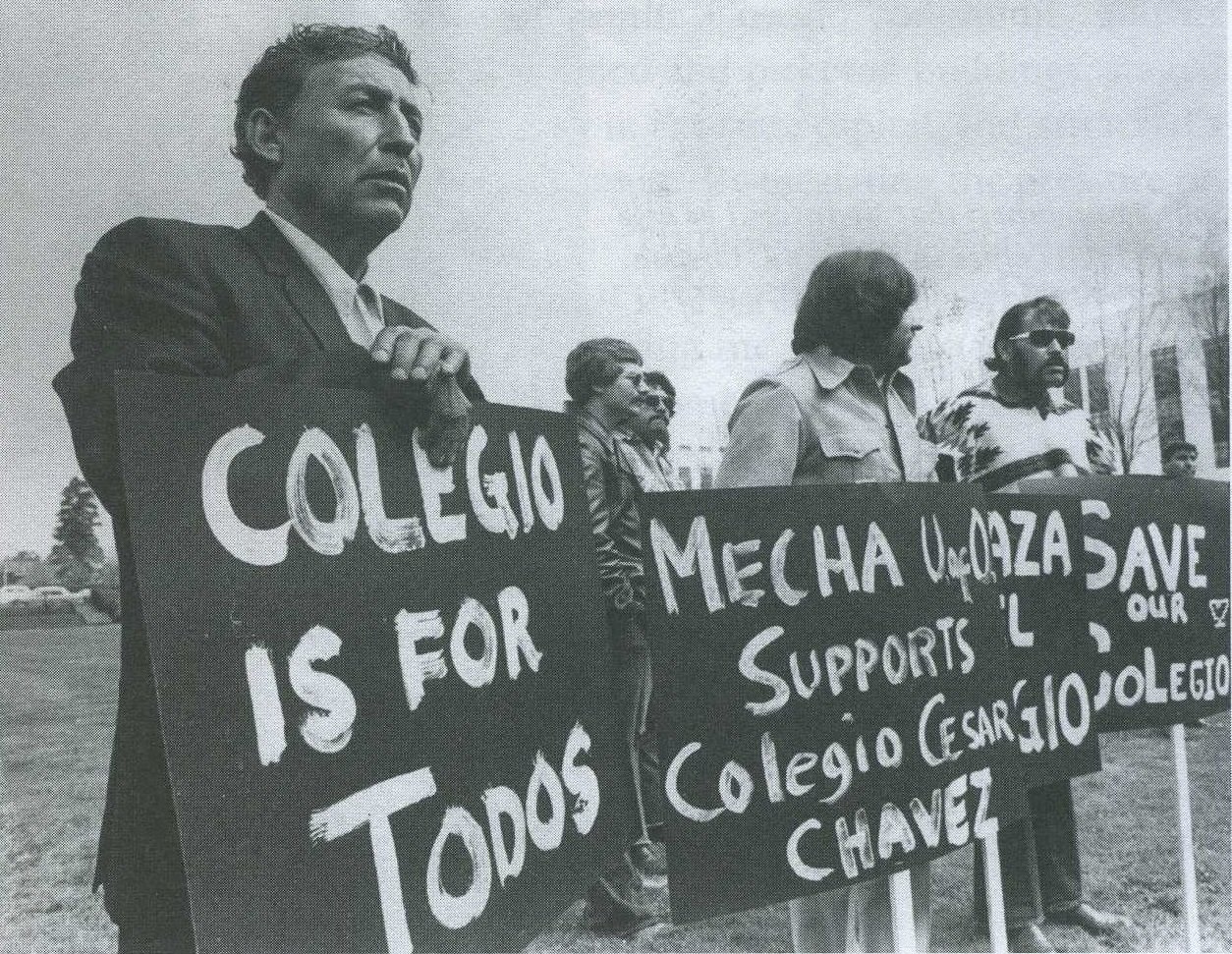
Ayuda para Colegio Cesar Chavez, by user Movimiento. Wikimedia Commons (CC-BY-SA-3.0).
Additionally, almost every university in the Southwestern part the U.S. still has a MEChA student organization (Movimiento Estudiantil Chicanx de Aztlán).

Political Representation
Even within our predominantly two-party political system, we are starting to see more representation from ethnic minority groups.
Within the Mexican American community specifically, twin brothers Joaquin and Julian Castro (whose mother was a chairwoman of a local Raza Unida chapter during the Chicano Movement) have achieved a great deal of success in the national political arena.

Flag of the United States. Wikimedia Commons, PD (U.S. Code § 105).

Joaquin Castro . . .

. . . is a member of the US House of Representatives in 2021.
Joaquin Castro, Official Portrait, 113th Congress, unknown photographer. Wikimedia Commons, PD (U.S. Code § 105).

Julian Castro . . .

. . . was the youngest member of President Obama’s cabinet.
He served as the Secretary of Housing and Urban Development from 2014–2017.
Julian Castro’s Official HUD Portrait, unknown photographer. Wikimedia Commons, PD (U.S. Code § 105).

The Entertainment Industry
Eva Longoria, by Timothy Greenfield-Sanders. National Portrait Gallery.

Entertainers from minority groups are also more visible now than ever before.
For example, Eva Longoria became the first pivotal and primetime Latina character in U.S. television. She is also philanthropist and activist, and even graduated from Cal State Northridge with a master’s degree in Chicano Studies!

The Entertainment Industry
Carlos Santana, the son of a Mexican mariachi musician, moved to San Francisco as a teenager and became an internationally-renowned guitarist. He inspired a new generation of musicians with his creative blending of old and new musical styles, and is widely regarded as the father of Latin rock.
Carlos Santana, by Herb Greene. National Portrait Gallery.


The Spirit of the Chicano Movement
Their willingness to engage in the difficult struggle to improve their conditions has inspired many people . . . perhaps even you.

César Chávez, by Emmanuel Martinez. Smithsonian American Art Museum.
The general spirit of the Chicano movement is another undeniable and important (albeit less tangible) legacy.
Chicano/a activists set an important example of what it looks like to advocate for your community and to work on behalf of the poor.

Cultural Awareness and Pride
Perhaps most importantly, the Chicano movement fostered a deep sense of cultural awareness and pride within the Mexican American community. As Chicano author Maceo Montoya (2016) stated:
“Before the Chicano movement, Mexican Americans were made to feel ashamed of who they were. Their language, culture, and history were denigrated and the only possibility of escaping a lifetime of indignity was to shed those markers of difference. Being proud of who you are doesn’t seem like a radical statement, but for Mexican Americans it is one of the Chicano movement’s most important legacies” (p. 205).

The Spirit of the Chicano Movement Lives On!
Chican@s have claimed their place within this beautiful, diverse tapestry that we call America . . . and their music is a powerful and tangible reminder that they are here, deserve to be here, and will continue to fight for their communities and against injustice.




From Left to Right: Agustín Lira and Alma, by Tom Pitch; Quetzal, by Brian Cross; Los Texmaniacs, by Daniel Sheehy. Smithsonian Folkways Recordings. Rumel Fuentes, by Chris Strachwitz, Arhoolie Records.

Final Reflection Activity
Within this final activity you will have an opportunity to reflect on your own personal preferences for the music we have learned about.
Throughout your journey and exploration of this learning pathway, you have had a chance to experience the story of the Chicano movement through music.

Final Reflection Activity
- Read the instructions on the next several slides.
- Record your responses on the "Music of the Chicano Movement Final Project" worksheet.

Look at the Song List . . .
-
Do you remember all the songs?
-
Is there a song that stands out as your favorite?
-
Take some time to think about this . . . go back and listen to the songs if you need to (all tracks are available via Spotify and YouTube).
-
Once you’ve decided, write the title of your favorite song on your Final Project Worksheet.

Genre and Song Type
-
How would you define the genre of this song (e.g., conjunto, tejano, mariachi, son jarocho, samba, rock)?
-
Is this song a fusion of several musical genres?
-
Is this song an example of a certain song type? (e.g., corrido, ballad, folk song, bolero, protest song)?

Ensemble and Song Structure
- How would you describe the ensemble that performed this song (e.g., mariachi, conjunto ensemble, solo artist with background instrumentalists, rock band, large band, trio, duet, theater group, children, rondalla, “eclectic” group, etc.)?
- How would you describe the musical structure of this song (e.g., verse/chorus (AB), strophic (AAA)).
- Does it have a certain rhyming scheme? How are the verses structured? Is there any improvisation? Are there any distinct musical and rhythmic patterns that stand out?

Other Considerations
-
What is the main message of this song?
-
How does this song relate to the Chicano movement?
-
Describe how your preferred song relates to your own personal interests, experiences, knowledge and/or skills.
-
Is there anything else you would like to add regarding why you liked this song or why it was unique?

Learning Checkpoint
- What are some of the most important legacies of the Chicano movement?
- Which of the songs included in this learning pathway were your favorites, and why?
End of Path 3 and Lesson Hub 12: Where will you go next?


Lesson Hub 12 Media Credits


Audio courtesy of:
Smithsonian Folkways Recordings
Video courtesy of:
Smithsonian Education
Smithsonian Folkways Recordings
Images courtesy of:
Archives of American Art
The Arhoolie Foundation
Campo Negro Records
Salina Canizales
TM/© 2021 the Cesar Chavez Foundation. www.chavezfoundation.org
Denver Public Library
The Library of Congress
Los Angeles County Arts and Culture
National Museum of African American History and Culture
National Museum of American History
National Portrait Gallery
San Diego State University, Department of Chicana and Chicano Studies
Smithsonian American Art Museum
Smithsonian Folkways Recordings
© 2021 Smithsonian Institution. Personal, educational, and non-commercial uses allowed; commercial rights reserved. See Smithsonian terms of use for more information
This Lesson was funded in part by the Smithsonian Youth Access Grants Program with support from the Society for Ethnomusicology and the National Association for Music Education.
For full bibliography and media credits, see Lesson 12 landing page.


